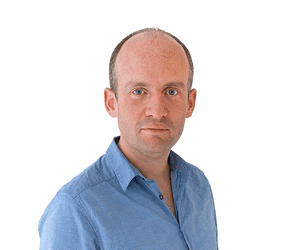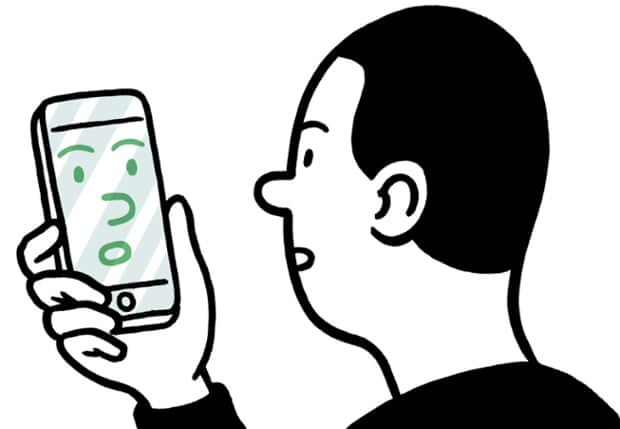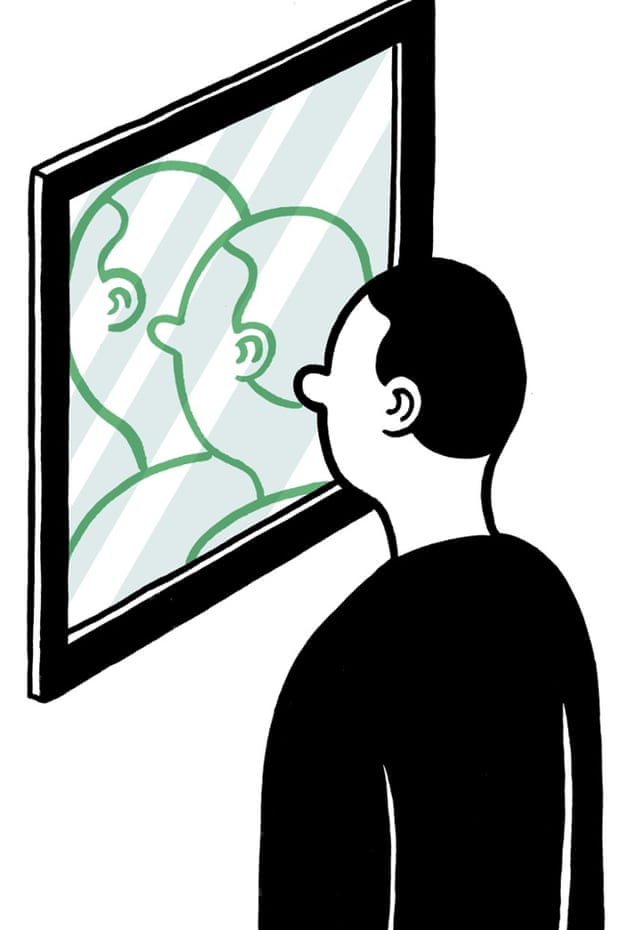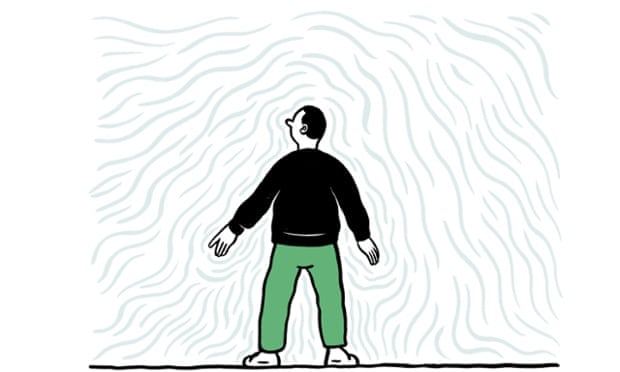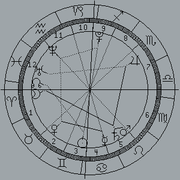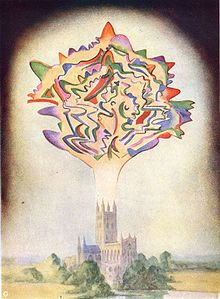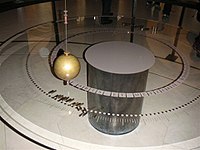“”
Rational Wiki's critical take on Pseudoscience... If you are in possession of this revolutionary secret of science, why not prove it and be hailed as the new Newton? Of course, we know the answer. You can't do it. You are a fake. |
| —Richard Dawkins on pseudoscientists[1] |
”Quixotism is a folly when the energy which might have achieved conquests over misery and wrong, if rightly applied, is wasted in fighting windmills[.] |
| —Flat-earther Samuel Birley Rowbotham[2] |
Pseudoscience is any
belief system or methodology which tries to gain legitimacy by wearing the trappings of
science, but fails to abide by the rigorous methodology and standards of evidence that are the
marks of true science. Although pseudoscience is designed to have the appearance of being scientific, it lacks any of the substance of science.
Promoters of pseudoscience often adopt the vocabulary of science, describing conjectures as
theories or
laws, often providing supposed
evidence from observation, expert testimonials, or even developing what appear to be mathematical models of their ideas. However, in pseudoscience there is no real honest attempt to follow the
scientific method, provide
falsifiable predictions, or develop
double blind experiments. Pseudoscientists often use the tactic of
cheating the scientific method.
[edit]History
With the rise of the
Enlightenment movement and the success of the physical sciences in describing the natural world, a new-found respect for science was developing in the western world. As a result, charlatans everywhere attempted to capitalize on this phenomenon by hawking a range of "scientifically proven" remedies, potions, treatments, and devices to cure the woes of man and bring peace and well-being to all. The term "pseudoscience" developed in response to these con men. One of the first recorded uses of the word "pseudo-science" was in 1844 in the
Northern Journal of Medicine, I 387:
“”That opposite kind of innovation which pronounces what has been recognized as a branch of science, to have been a pseudo-science, composed merely of so-called facts, connected together by misapprehensions under the disguise of principles. |
By the beginning of the 20th century science had further extended the boundaries of human understanding. With the development of
quantum mechanics and
relativity, science was presenting reality as a strange place challenging peoples' ability to understand the mess of particles and high velocities that make up everything we think we know. These ideas persisted and proved themselves because of their ability to make predictions that could be verified experimentally. Against this backdrop one of the most famous modern philosophers of science,
Karl Popper, tried to establish what separated out the true science of people like
Albert Einstein from
intuitively less rigorous concepts such as psychoanalysis. Popper decided that the key was
falsifiability. True science made
specific predictions that could be proven false by examining
empirical reality. Pseudosciences rarely cared about making predictions, and if they did they were unfalsifiable or impossible to test.
After Popper, philosophy entered the stage of
social constructionism, with philosophers arguing that science was an illusion. Some, such as
Paul Feyerabend, argued that it was impossible to separate science and pseudoscience, and in the end such a separation is undesirable anyway.
[3]The reality of pseudoscience and recognition of the harm it causes was, and remains, a unifying idea behind
skepticism and the work of most practising scientists. With the emergence of
New Atheism and its emphasis on
critical thinking, a groundswell of effort to combat modern (and sometimes very non-modern) pseudoscience has developed. The popularisation of debunking pseudoscience may have begun with
Harry Houdini, who spent his later days taking on spiritualists and mediums. In the latter half of the 20th Century, people like
James Randi,
Carl Sagan, and
Richard Dawkins published books and made television appearances tackling these subjects. Relative newcomers
Ben Goldacre, who wrote the best-seller
Bad Science, and
Simon Singh, who is currently winning a libel case after calling out
chiropractors on their unsupportable claims, have furthered the trend. Meanwhile, skeptical groups and knowledge bases continue to expand on the internet and
Skeptics in the Pub has changed from a small gathering in London to a worldwide event often attracting hundreds to each meeting. All of these groups and individuals have actively and publicly fought against
woo,
quacks,
cranks,
creationism, and the thousands of other manifestations of pseudoscience.
[edit]Characteristics of pseudoscience
[edit]Vague and/or exaggerated claims and ambiguous language
![]()
"A good day for buying patio furniture."
[4]One of the easiest ways to avoid being proven false is to not make any specific claims at all. Predictions in science are all about specificity and exactness. Operational definitions have to be clearly defined and shared; what you are measuring, how you will measure it and how you will determine if any results are significant are all hallmarks of good science. Pseudoscientific claims are never specific but rely on vague and ambiguous language, often encompassing grandiose claims.
Astrology is one of the prime examples of this, as its vague claims allows its "predictions" to apply widely to many people at once and its clever language allows it to be very wrong, but save face. For example, ask an astrologer who you have never met before to describe your personality. He may reply, "You consider yourself a very selfless person but there are times you have acted rather selfishly." This statement is true
for pretty much everyone.
In
quack medicine a pseudoscience promoter might claim a given treatment "removes
toxins from your system", never saying
what toxins, or how they will be removed, or how you can tell if they will be removed. The toxins are the true cause of disease, never saying how they cause disease, and that removing them will cure you of all known afflictions. In the few cases like this where the claims are specific, they can be tested and are often left wanting. In the case of
Kinoki Foot Pads, the manufacturers claimed they removed numerous chemicals such as benzene and
mercury (most of which weren't supposed to be in the body anyway) and lab trials found none of them in the pads.
In other areas of science, it is popular to claim that one has discovered a "
unifying theory" that explains all of reality through special "
energy" and "forces". Or that your
perpetual motion machine works from hitherto undiscovered principles of magnetism.
[edit]Lack of peer review, and claims of vast establishment conspiracies
One of the single most important aspects of true science is replication and verification, particularly from third parties not involved in the original experiments. This is the heart of
peer review, where new ideas are laid out before fellow scientists with all the details of how to replicate and extend the research. While the social dynamics of peer review are not foolproof, and many interesting issues can emerge, there is still nothing better for advancing human knowledge. It is, of course, not surprising that people who promote pseudoscience want to avoid peer review like a plague.
If an idea has not been published in a single
peer review journal, it is safe to say it is not science. Most people have at least a passing knowledge of the peer review system and so pseudoscience promoters often have to offer
hand-wavy explanations for why their ideas have not been published anywhere. In
alternative medicine it is common to blame
Big Pharma for wanting to hide the fact that some natural product cures all known illnesses because it will hurt their profits – despite the fact that such a thing would generate more profit, and Big Pharma would be dying to get their hands on it! In
biology creationists often claim that
evolution is propped up by a vast
atheist and
materialistconspiracy, as if every PhD student ended their final viva with their supervisor taking them to one side for "a little chat". This "big conspiracy" is perhaps the most common tactic, but more imaginative excuses do exist; such as
Jason Lisle claiming that his theory on how to solve the
starlight problem doesn't need to pass through the peer review system of major science journals because you wouldn't expect
evolutionist papers to pass through creationist journals.
When pseudosciences are published, they are often published in
pseudo-journals; journals that use "peer review" but are less rigorous than one would expect of the scientific mainstream. Pseudoscience promoters will sometimes start their own journals that are "reviewed" only by fellow promoters. These journals are often easily identified by their poor standards for inclusion, or their lack of inclusion in scholarly indexes such as ISI Web of Knowledge (or even Google Scholar). One of the most obvious characteristics of pseudo-peer review is a total lack of interest in replicating or verifying the "work" of others in the field. Which brings us to the next point.
[edit]No attempts or interest in replication or outside verification
While closely related to a refusal to submit to peer review, the total lack of interest in any form of replication or outside verification is an important issue in and of itself. Whereas real science is a work in permanent progress with many people around the world replicating experiments, exchanging results, working out details and deriving further hypotheses; pseudoscience is presented as a completed package, a done deal. Pseudoscientific ideas may claim to have unified physics, cured the sick, reduced all of mathematics to an algebraic proof, and created limitless energy. They claim there is no need to go any further, just embrace the idea and enter utopia. In contrast real scientists love it when others pick up their work and use it as a basis for further research – if nothing else, it pumps up their citation numbers.
Often the pseudoscience promoter will use the techniques of vague language to make outside verification impossible, or will offer the secrets only to those people who are deemed worthy or pay large sums of money. If by chance, someone attempts to replicate or verify the idea and fails they must be either stupid or a paid shill for the evil conspiracy out to hide the truth.
This embracing of the idea that the problem is solved and needs no verification is also the source for our next major characteristic of pseudoscience.
[edit]Stasis, and hostility towards development or change of the idea
Pseudoscience is embraced by its proponents with almost religious fervor. Since the idea can never be wrong, there is very little that needs to be changed or should be changed. This is most aptly seen in pseudosciences that have been around for generations such as
homeopathy or
acupuncture. One is hard pressed to find significant differences between the basic idea proposed 300 or 3,000 years ago and the beliefs and practices of modern day quacks.
This is in marked contrast to real science, where stasis of even a few years is rare – let alone decades or centuries. The difference between physics as proposed by
Isaac Newton and the modern day is huge. Despite what creationists like to claim,
Charles Darwin's idea of evolution by
natural selection has gone through huge changes with the advent of genetics, developmental biology and hundreds of other fields.
While progress in science can be rough, and personalities can clash, nothing can compare to the outright hostility of a pseudoscience promoter when faced with having his ideas developed or changed. Any such attempts will usually mark the upstart as a member of the establishment out to undermine truth once again.
[edit]Frequent changes in methodology without changing the conclusions
As an alternative to the above, pseudoscience can be
overly eager to update its claims and ideas. While science is always a "work in progress" to some extent and undergoes rapid change, new hypotheses and theories are both formed on top of existing ones and more importantly
generate new claims or avenues of exploration.
Relativity, groundbreaking as it was, did not completely discard Newtonian physics; indeed, Einstein was able to formulate his theory through the classic Maxwell Equations. However, in this hallmark of pseudoscience, previous hypotheses and mechanisms are dropped wholesale as soon as something slightly more promising comes along – while still keeping the same basic conclusion.
Transhumanism as a movement in the 1960s has almost no resemblance to
transhumanism in the 21st century, yet people are still somehow promised a future of immortal supermen through the power of science.
Fad diets in particular are prone to this, spewing out
technobabble on how
this newly discovered trick will trim the hell out of your
wallet waistline while not explaining why it dropped the previous dozens of claims.
[edit]Refusal to use the scientific method, or the claim that it can not be used
Pseudoscience promoters rarely discuss experimental evidence when promoting their falsehoods. But in debates that inevitably emerge they must sometimes face the question of why they don't submit their ideas to the basic practice of science. This is commonly seen in medical
woo where the gold standard of the
double blind study would clearly show the ideas to be false. Most promoters will refuse to do the studies, and often claim that their ideas are somehow impossible to test through standard means.
This
special pleading is often hidden in a positive light. For example, promoters of "alternative medicine" will claim that the "
whole body" approach to healing requires full disclosure between the doctor and patient. Homeopaths claim that true remedies must be tailor-made and thus cannot be tested against any kind of standard.
Another technique is claiming that attempts to apply skepticism or testing to the idea destroys it. This objection is common in various forms of
psychic woo where skeptics are alleged to disrupt the delicate "
telepathic waves". Many pseudoscience concepts based around supernatural causes will claim that their particular cures are carried out by an agency of some sort that will not willingly be tested in such a manner.
[edit]Misuse of scientific terms
One of the easiest ways to gain the trappings of science is to describe pseudoscience using the words of science, or terms that sound scientific (often aptly described as
technobabble or
equivocation). This is easiest to do with scientific concepts that are poorly understood by the general public (which, admittedly, includes the
vast majority of scientific concepts).
New Agers are particularly fond of "energy" as a catchall term. Another favorite target for pseudoscience promoters is the use of
quantum woo, where waves, particles, strings and force lines magically come together to produce amazing consequences.
Law of Attraction proponents, for example, claim that you can manifest anything you want into reality (money, fame, sex, a better hair style) by focusing on it and "collapsing wave functions" in reality.
Other techniques often involve not misusing existing terms, but rather creating whole new terms in a style that seems scientific. An excellent example of this is the creationist
baraminology and barmin, which is their fancy replacement for the old
PRATT that animals only evolve within "kinds".
[edit]Misrepresentation of terms
Another facet of pseudoscience that occurs in popular culture is the misrepresentation of a term.
The most obvious example of this is "life expectancy" as seen in the
In Search of... episode "The Man Who Would Not Die" (About Count of St. Germain) where it is stated "Evidence recently discovered in the British Museum indicates that St. Germain may have well been the long lost third son of Rákóczi born in Transylvania in 1694. If he died in Germany in 1784, he lived 90 years. The average life expectancy in the 18th century was 35 years. Fifty was a ripe old age.
Ninety... was forever."
Even though it talks about life expectancy as being an average, the statement still presents ages past that average as being very rare, which is not exactly true. The life expectancy generally quoted is the
at birth number, which is an average that includes all the babies that die before their first year of life as well as people that die from disease and war.
Say you have two people born the same day: one dies at the age of 2, but the other lives to the age of 80; the average age of those two people is 41 ((80+2)/2) and if you averaged three people of 2, 3, and 80 you would get an average age of only 29! As you can see it doesn't take that many child deaths to send the average down and this is exactly what a chart regarding Roman Life Expectancy shows. Just living to the age of 5 nearly doubled your life Expectancy from 25 to 48.
Even with these averages you still had people who lived a long time. For example, Benjamin Franklin died in 1790 at the age of 84 and Ramesses II is thought to have lived 90 years.
[edit]Poor standards of evidence
In science
evidence is valued when it is collected in a rigorous manner and is as divorced as possible from personal bias. The classic example is a controlled, double blind study. Though naturalistic observation is sometimes used, it is not
proof of a theory. Furthermore, when it is used, a substantial quantity of data is usually involved. The use of statistics and an emphasis on
statistical significance is also a strong hallmark of legitimate science.
In pseudoscience the importance placed on the value of evidence is almost reversed. Rigorous and controlled experiments, large data sets, and statistical reasoning are replaced with an emphasis on personal,
anecdotal evidence and
testimonials. Another major emphasis is on expert opinion. Anyone with
letters after their name who is willing to say something positive about the idea is quoted to provide evidence the idea is valid. (It's a minor red flag when someone insists on
attaching "Dr." or "Ph.D." to their name.)
[5] One well known example of this are the ridiculous lists of scientists that question Darwinian evolution put together by
creationists. This is nicely countered with
Project Steve that shows the ridiculous nature of this technique. Often the expert or scientist quoted in support of a pseudoscientific idea may not actually support it and the quote is taken out of context. This is called
quote mining and is a great indicator of pseudoscience.
One final problem is that pseudoscience promoters are
only interested in evidence that confirms the initial idea. This
confirmation bias means that any evidence that might contradict the theory is ignored.
[edit]Reliance on negative proofs
In science ideas are never really proven, which is demonstrated in the old adage that "proof is for math and alcohol". Pseudoscience promoters however are big fans of the
negative proof. They push the idea that somehow the "truth value" of an idea is a binary claim, that if an idea is not
proven false it must be true. However, most of their claims are
positive claims – and as such would require evidence to back them up. The
burden of proof is on the promoter, and
extraordinary claims require extraordinary evidence.
[edit]Reliance on outside or unrelated fields for results
Especially applicable to "
almost science" are ideas which place an undue burden on fields of science or engineering not directly covered by the topic to make it work. While modern science is noteworthy for hand-holding between disciplines and real scientific projects are sometimes unable to be immediately implemented due to real-world limitations, pseudoscience always ends up passing the buck to a more trustworthy discipline. For example, advocates for
cryonics often claim that their bizarre method of revivification will be completely validated and viable once
nanotechnology catches up. Or that
cold fusion is just around the corner, once engineers design a viable containment reactor.
[edit]Reliance on outdated or later refuted scholarly works
Sometimes a pseudoscience supporter will present a scholarly article from a work in the related field as "proof" that the claim is not pseudoscientific, but via further research it can be shown that this sole study was a glitch or later proven false.
For example, K. Linde, N. Clausius, G. Ramirez, et al., "Are the Clinical Effects of Homoeopathy Placebo Effects? A Meta-analysis of Placebo-Controlled Trials,"
Lancet, September 20, 1997, 350:834-843 at first glance supports homeopathy
but this paper was refuted in "The end of homoeopathy"
The Lancet, Vol. 366 No. 9487 p 690. The Vol. 366 No. 9503 issue (Dec 27, 2005)
and by 14 studies from 2003 to 2007
[6]This by far is the more dangerous form of pseudoscience as it gives a (generally false) air of legitimacy to a claim.
[edit]Ideas are unfalsifiable
As Popper laid out seventy years ago, one of the primary demarcations between real science and pseudoscience is that pseudoscience relies on pushing ideas that cannot be falsified. Unfalsifiable claims shield those steeped in woo from any true criticism since there can be no "
proof" that their idea is wrong.
Unfalsifiability can manifest itself in different forms. The most general sense is when an idea is proposed that is "
not even wrong", meaning that it can never be tested or can never be formulated in such a way as to make empirical predictions. For example, some
young earth creationists claim that
God created the world with the
appearance of old age. As there is no difference between a world that is old and one that merely looks old, the hypothesis cannot be tested in a scientific way.
Sometimes specific concepts and claims within a pseudoscience can be falsified – the efficacy of alternative medicines for example. When this happens, the usual tactic is to change the criteria for falsification – a strategy known as "
moving the goalposts".
Intelligent design is constructed almost completely from this approach by altering the criteria by which evolution can be disproved every time new research is carried out. Many of the specific
claims of intelligent design, such as the
irreducible complexity of certain biological features, can and have been falsified (when the naturalistic evolutionary pathways are eventually found). ID advocates then 'move the goalposts' to another irreducibly complex feature until that is disproved, and so on. However, the general concept that a supernatural entity designed life in its current form remains an unfalsifiable idea. Since we can neither prove nor disprove this "hypothesis" it lies outside of the domain of science, and adorning it with scientific trappings is a textbook example of pseudoscience.
Moving the goalposts is also common in more liberal theologies that try to place God as the overseer of the natural world. Whatever cannot be explained by science, well, that is God. And when science comes up with an explanation, well then, we move God to whatever still can't be explained. This
God of the gaps mentality is generally unfalsifiable as there will always be such gaps ready to be filled by God, even if specific claims might be falsifiable.
[edit]Political and/or religious motivation
A huge red "pseudoscience flag" should go up when an idea is pushed against the backdrop of a strong agenda that has nothing to do with the idea being proposed at all. This is most easily seen with creationism and intelligent design where the "science" is an afterthought to the general battle between "evil materialism" and religion. This can often be seen when an individual suddenly starts promoting a pseudoscientific idea shortly after a major political or religious conversion, or a list of "supporters" of an idea are all unified in some sort of philosophy or religion.
Pseudoscience can also thrive as the backdrop of political as well as religious ideology.
Lysenkoism thrived in the Soviet Union because it was put forward as part of the
Communist ideology. Pseudoscience is also often used to repress minorities or "undesirables" such as the "science" that was used to support
eugenics programs. In modern
right-wing politics the influence of the
religious right has led to a
politicization of science that links religious and political motivation in pushing various forms of pseudoscience.
[edit]Common fields plagued by pseudoscience
[edit]Medicine
Probably the single most destructive form of pseudoscience is
quack medicine. Its toll financially, and in terms of human health and life is immense. At face value, quack remedies for mild headaches or "feeling down" may seem harmless, the
placebo effect as well as other factors may lead people to believe that they actually work. Alternative medicines prey on a minority of bad experiences with conventional medicine to draw people into their use, first for mild conditions and then serious ones. This leads to patients forgoing conventional (i.e., proven) medicine for a range of ailments that are far more serious, from
cancer to AIDS.
There are two major categories of pseudoscience in medicine. The first is
supernatural, psychic, and
paranormal healing. This
faith healing is popular with
televangelists like
Benny Hinn. Some religious sects, such as
Christian Science, are based exclusively around the pseudoscience that every major illness can be cured through supernatural means and this often results in death from easily preventable or curable illnesses. This form of healing doesn't need to be overtly religious;
quantum woo such as the
Law of Attraction, or techniques like
psychic surgery and
Reiki are often non-theistic but still "supernatural" in origin. Some "ancient traditions" such as
acupuncture and
chakras also generally fall into this category.
The second category avoids supernatural claims, but instead relies on poorly supported or discredited "science". Often this kind of pseudoscience takes the form of pushing various
vitamin or
herbal supplements as magic cures for diseases. Other forms include taking outdated concepts of disease and cures and claiming they are just as accurate or more accurate than modern medicine.
Homeopathy is a great example of this, based on a 200 year old theory of disease that wasn't even widely accepted when it was first proposed--and, perhaps more importantly, was compiled
before the germ theory was ever established. Finally, when terrible things happen the desire to "blame" someone leads to false scapegoats. This is most clearly seen in the
anti-vaccination movement, particularly about the role of
thiomersal in
autism. Some of the arguments used by the
anti-nuclear movement also fall into this category.
[edit]Biology
Biology is subjected to probably the best known and most widespread pseudoscience of all —
creationism. Whatever the manifestation, whether
old Earth,
young Earth, or
intelligent design, creationism has been a prolific and long standing pseudoscience. It all stems from the perceived threat of
evolution to religion.
While creationism has certainly dominated as the main pseudoscience in biology it is not the only one. Historically,
Lysenkoism and eugenics have both been extraordinarily deadly. Purported differences between the innate abilities of different races such as in
The Bell Curve share many characteristics with pseudoscience. Many of the pseudosciences in medicine overlap with biology, with denying
AIDS or even the
germ theory of disease and replacing it with ridiculous concepts like
homotoxicology.
[edit]Physics
Physics has been home to some of the weirdest forms of pseudoscience. Because its concepts are particularly arcane to most lay people it sometimes seems to be possible to pass off just about any incoherent drivel as "science". By invoking the
magic word "
quantum", suddenly the most ridiculous, utterly impossible statements become easily accepted as true. This pops up all over the place with
cranks like
Deepak Chopra and his
quantum healing, or
Esther Hicks and her
Law of Attraction.
Physics also offers a home for many grand
theories of everything. Unified field theories abound which bring together not only all of the forces of reality but also the human mind into one algebraic equation that explains everything. This form of pseudoscience is helped along by a lot of the popular press and books discussing unified field theory as the holy grail of physics.
Another very popular subject for physics-based pseudoscience is
free energy. Whether through magnetism or
orgone or any other made-up substance, people have claimed for generations to have the solution to our world's energy needs in their garage.
Cold fusion, similar to free energy, had its heyday in the media before its original perpetrators were exposed as frauds. However, cranks regularly rant on internet forums that they have cold fusion powering their freezers right now. These ideas merge with engineering into claims of
perpetual motion machines or devices that can generate more energy than they consume.
And finally we have straight out
denialism coated in "scientific" language with things like the
moon landing hoax or
anti-relativity tirades.
[edit]Mathematics
Pseudomathematics is probably one of the most under-appreciated fields of pseudoscience, which is too bad since there is a wealth of great material. One of the biggest areas for exploitation is in the area of "proofs" and "theorems." Cranks love to "prove" theorems that have not yet been proven by real mathematicians, or to "disprove" theorems that have been proved, and even better to "prove" already proven theorems using high school algebra. Andrew Wiles and his proof of
Fermat's last theorem has been a major lightning rod for cranks. Another favorite is
squaring the circle.
In addition to proofs, there is a range of pseudoscience proponents that like to try their hand at destroying core concepts in mathematics. The imaginary number is a common target, as well as irrational numbers. Finding an exact solution to Pi remains the most popular application of pseudoscience in this category.
[edit]Social Sciences and the Humanities
The various social sciences are absolutely rife with pseudoscience. The field is particularly dangerous because many of the ideas are actually "accepted" by some "experts" in the field.
Psychoanalysis is a classic in psychology; it was the pseudoscience that Popper picked out to compare to the theory of relativity. Many of the diagnostic and testing methodologies in psychology, things like
repressed memories,
multiple personality disorder and the
Rorschach test, are based on nothing but pseudoscience.
[edit]History
As the analysis of
history is generally non-experimental, the discipline is not "scientific" in popular understandings of the term. Except in cases where propositions can be definitively demonstrated or discounted through, for instance, the analysis of
archaeological evidence, it makes little sense to talk about history as a pseudoscience.
That said, history can also be practiced in an intellectually dishonest manner, giving us
pseudohistory. Pseudohistory is the handmaiden of
conspiracy theories, harnessed to trouble conventional time-lines or to prove the existence of nefarious plots such as the
John F. Kennedy assassination conspiracy theory or the
9/11 truth movement.
What distinguishes history from pseudohistory is the rigorous application of the
historical method[wp], refraining from resorting to
ad hoc explanations (e.g.
aliensdidit or
Goddidit), and the ability to formulate hypotheses that fit with existing results of historical research (contrast the latter with the exponents of
alternate historical chronologies).
[edit]Linguistics
Common forms of
pseudolinguistics are spurious claims of relationships between language families (often for
nationalist reasons) and nonscientific theories about
how language influences our thought.[edit]A note on terminology
Pseudoscience is sometimes referred to as "junk science." However, the term "junk science" has become associated with
anti-environmentalbullshit due to corporate mouthpiece
Steve Milloy's use of the term. Milloy runs a blog called "Junk Science" where he obfuscates and denies
global warming, risks associated with the use of
DDT, and other environmental problems.
Michael Fumento, another
shill, has furthered this use of the phrase. In general, when a pundit is being interviewed or writing a column about environmental or health issues, the term "junk science" usually translates to "science that will be very inconvenient for my funders" and "
sound science" translates to "some bullshit I just made up to deny the problem."
[edit]See also
- ↑http://old.richarddawkins.net/quotes/28
- ↑Zetetic Astronomy Earth Not a Globe, Chapter XV.
- ↑ Feyerabend P Against Method: Outline of an Anarchistic Theory of Knowledge (1975)[1]
- ↑A good day for buying patio furniture - This was a genuine horoscope, published in the Khaleej Times
- ↑ Like this guy, who is both a creationist and a global warming denialist.
- ↑Clinical Trials (2003-2007)
![]()
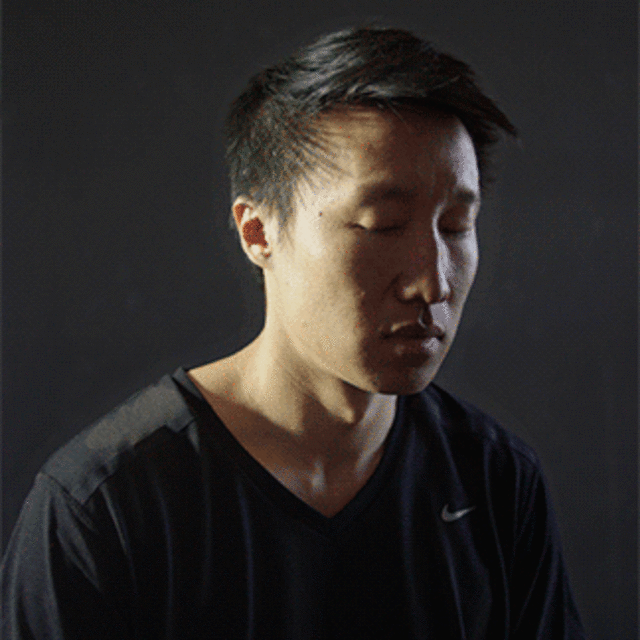




 In January 1986 Cook became the first NASA official to testify publicly on the space agency's prior knowledge of flaws in the solid rocket booster O-ring joints that destroyed Challenger and took the lives of its seven astronauts. He told his story in the book Challenger Revealed, published in 2007. Publisher's Weekly wrote of the book: "Easily the most informative and important book on the disaster."
In January 1986 Cook became the first NASA official to testify publicly on the space agency's prior knowledge of flaws in the solid rocket booster O-ring joints that destroyed Challenger and took the lives of its seven astronauts. He told his story in the book Challenger Revealed, published in 2007. Publisher's Weekly wrote of the book: "Easily the most informative and important book on the disaster." richardcook.com
richardcook.com 


